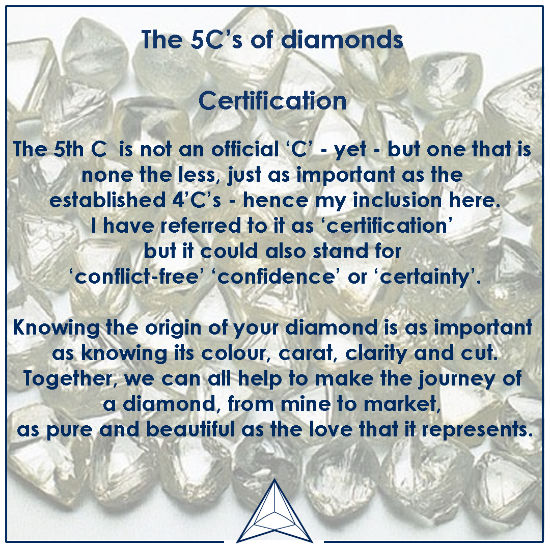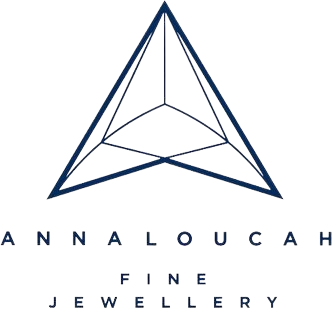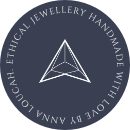‘If you have already begun looking for your perfect stone, then you may have come across what are often referred to as the 4C’s of diamond grading – traditionally these are Carat, Colour, Clarity and Cut.
In addition to these classic 4, I like to include a 5th ‘C’ of certification so that, where possible, it can be traced right back to the mine of origin.
Diamond grading is a fascinating world and to help you navigate it more comfortably I have put together a brief introduction so that when you hear of a stone being described as ‘1ct G VS round brilliant’ you’ll already feel familiar with what those terms mean.
I hope that you find my explanations of interest and that you enjoy beginning your journey into this characterful and vivacious stone!’
ANNA
A GUIDE TO DIAMONDS: THE 5 C’S
Carat:
A carat is a standard unit to measure the weight of a diamond. One carat equals 200 milligrams. This can be divided into points, where 0.75 carats = 75 points. A diamond’s value varies according to its number of carats and its rarity.

Diamonds may equal in weight but vary in price due to the difference in quality. This means that a smaller diamond with a high carat weight may be more valuable than a large diamond with a lower clarity, colour or cut.
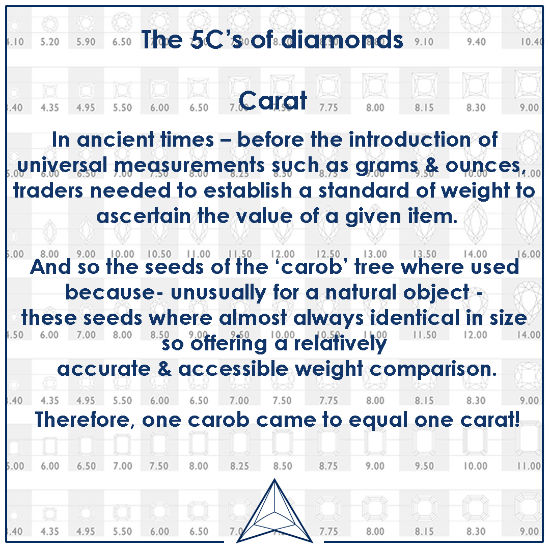
Colour:
When selecting your grade of diamond, the ‘colour’ grade of a white stone will be denoted by a single letter of the alphabet starting from ‘D’ and descending from there. ‘D’ is the whitest but generally a colour grade of ‘G’ is an excellent commercial quality.

The lower the letter the more yellowing the diamond will display. This yellowing is not generally considered desirable unless there it takes the stone into the ‘fancy’ coloured spectrum in which case the stone is considered even more rare and valuable than a white stone.
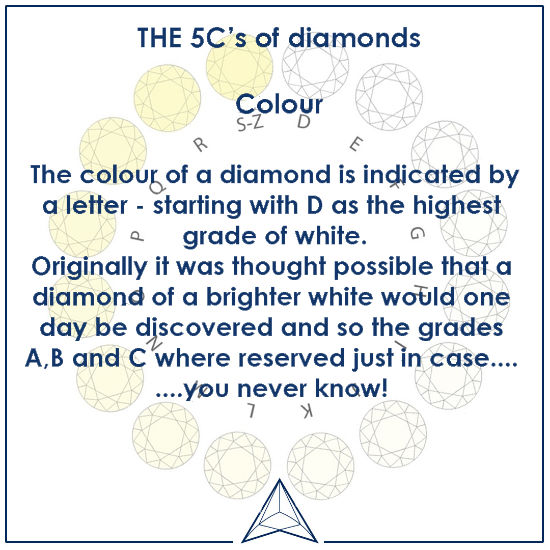
Clarity:
A diamond will reach a higher level of clarity depending on the flaws seen under the loupe at 10x magnification. A perfectly pure diamond is graded as ‘IF’ or ‘internally flawless’ and is extremely rare. From there, the clarity is graded on a comparative scale from ‘VVS1’ or ‘VVS2’ which are the two levels of ‘very very slight’ inclusion right through to ‘pique’ diamonds which are those that have inclusions which are visible to the naked eye.


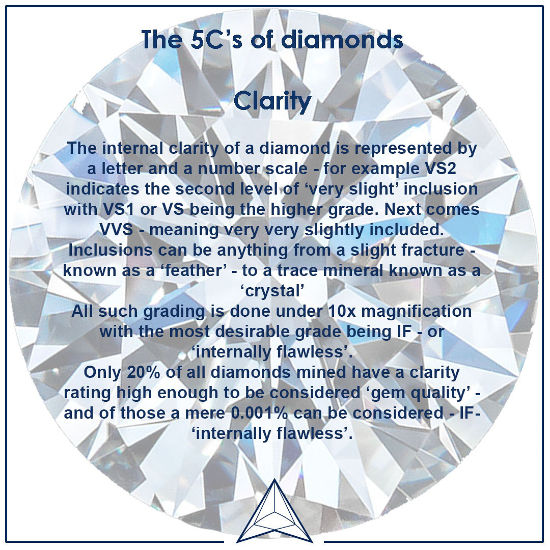
Cut:
Although ‘brilliant’ is the most well recognised of all the modern diamond cuts there are numerous others – sometimes referred to as ‘fancy shapes’ – each with their own unique character and appeal.
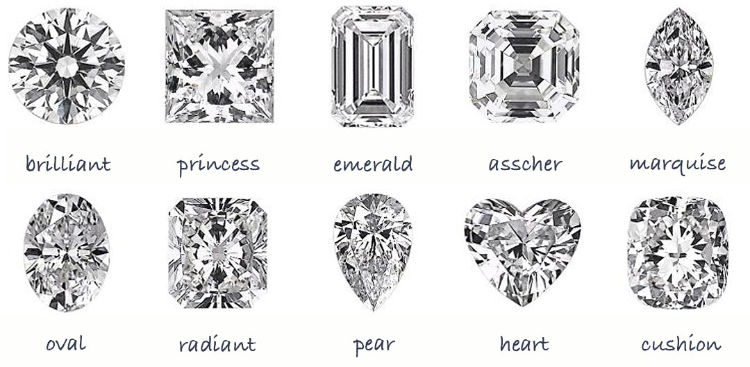
The ‘ideal’ cut of a stone allows light to enter from the top and bounce around within it before exiting again through the top as refracted light. It is this phenomenon that gives the stone its famous sparkle and so, if the angles of the stone are cut too steep or too shallow, the light will simply pass through and the diamond will appear lifeless.
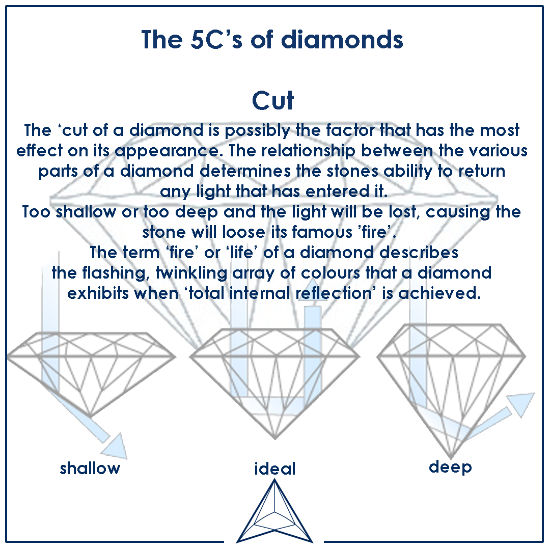
Old cut diamonds have many have tell-tale features, easily identified. These include:
- Deeply cut proportions – diamonds appear thicker than modern round brilliants.
- Small table – the upper facet is higher and quite small.
- Polished culet – The bottom facet of the underside known as the culet is polished flat.
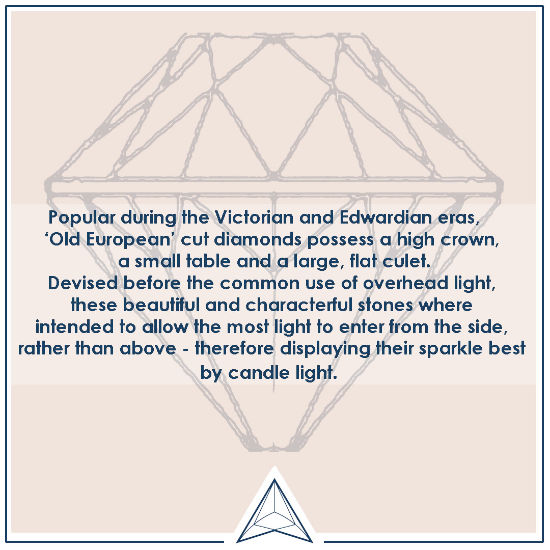
The “rose cut” diamond dates all the way back to the early 1500s.
The stones resemble the petals of a rose by trying to imitate the narrowing spiral of the petals; hence the name. In general, they are flat at the bottom and creating a larger surface area for the stone’s brilliance.
The rose cut has a somewhat glassy but charming appearance and even though fewer facets does result in less sparkle, they can be an intriguing alternative for those who want a more unique engagement ring.
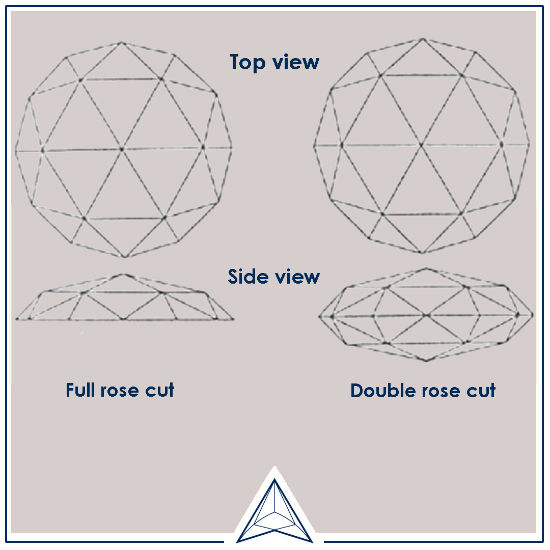
Certification:
‘I am committed to sourcing all of the diamonds that I use responsibly. By ‘responsibly’ I mean that no environmental damage or pollution has taken place, and human rights such as fair pay and safe working conditions have been stringently adhered to. Knowing the country and mine of origin is the key to ensuring total traceability and ethical credentials.’
To find out more about this subject please click here
